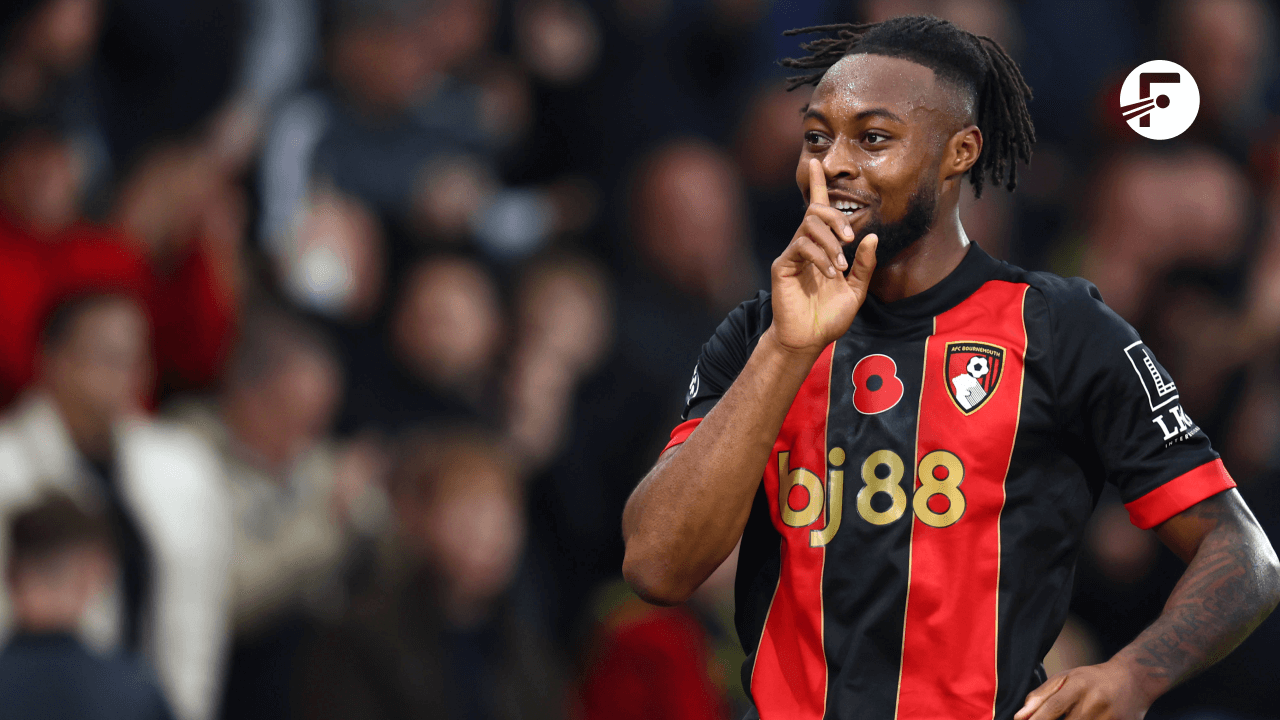Despite being one of Europe’s more modest top-flight clubs, Bournemouth have consistently defied expectations. They sit four points out of the top four, are on track for a 61 point season and consistently punch above their weight. Some extraordinary statistics demonstrate why Andoni Iraola’s distinctive high-pressing tactics allow them to compete against football powerhouses.
By Josh Gans
Bournemouth play their home matches in the smallest stadium in the Premier League, the Vitality Stadium, which houses just over 11,000 seats. To put this into perspective, it is the 67th largest stadium in English football, with fewer seats than 61 professional clubs and three non-league clubs. Their promotion in 2015 marked their top flight debut, and following their return in 2022, they were every bookie’s favourite to go back down. This is not a traditionally wealthy club with a history of success, but they managed to redefine themselves, with limited resources, into a stable Premier League side that will not roll over for anybody.
The Spanish manager has reshaped Bournemouth again by utilising his high pressing tactics. His players put their stamp on the match from the offset, setting the standard for the match and posing a particular threat to possession-based opponents. When utilised effectively, the high press disrupts these clubs’ usual comfort on the ball and causes panic among the players. Their wins over Arsenal, Manchester City, and most recently Tottenham, have epitomised this.

Those standout statistics
Per match this season, the Cherries have won the most possessions in the final third (6.6), most tackles in the middle third of the pitch (8.7), second most interceptions (9.6), and most fouls committed (13.7).
They have the fourth highest xG at 30.9, despite only netting 23 goals. Their attackers are underperforming in front of goal, so they should be even more successful than they have been. They are also top six or seven in nearly every attacking statistic except possession, where they rank 16th (44.8%).
Three of the top four players with most possession won in the final third are Cherries: Alex Scott is first (2.4 per 90) despite his meniscus injury, while David Brooks (1.9) and Luis Sinisterra (1.8) sit third and fourth respectively.

Key players
Even after Scott’s injury, Ryan Christie and Lewis Cook have maintained the energy, forming a cohesive ball-winning partnership in the midfield. Tyler Adams is also coming back into the picture, adding leadership and intensity to the mix.
The attack complements the midfield in this system. Sinisterra and Antoine Semenyo are both among the top wingers in the league in possession won in the final third. Dango Ouattara has made 2.4 successful tackles per 90 (93.3% success rate), the most by any attacker. Club-record-signing Evanilson fits seamlessly into this system, offering a high press that has already led to five penalties. None of these players are household names but they each provide a pivotal piece to the puzzle.

Dean Court
There is also something unique about Dean Court (AKA the Vitalit Stadium for sponsorship reasons) that makes it such a difficult place for teams to visit. Not only is it geographically among the furthest distances to travel in England, but it’s intimate nature plays a significant factor. Given its size, there is an echo that reverberates around the ground. A side that thrives off of causing opponents discomfort with an energetic high press functions well in a small, compact arena, especially when the home crowd gets behind their side, pouncing on every misstep from the opposition. This creates a less familiar environment for these big clubs.
Recent results setting the standard
The 2-0 win against Arsenal delivered a prime case study of Iraola’s effectiveness. When immense pressure forced the Gunners into a dangerous backpass, William Saliba was obliged to make a rash decision to bring down Evanilson, whose chaotic influence got him sent off. Their second goal came from a penalty from another stray ball backwards, forcing David Raya to take down the Brazilian striker. Bournemouth lost the possession battle 51-49% despite being a man up, but dominated in every other category. Iraola didn’t heavily shift the system after the red card, they still conceded possession and it paid off.
The Cherries nearly scored a minute into their 2-1 win against Manchester City, after Semenyo won it in midfield and sparked a spirited counter attack. This set the tone for the match and City never recovered. Again, Bournemouth lost the possession battle 64-36%, but had higher xG and missed four big chances, so it could have been a greater margin of victory.
In their recent 1-0 win over Spurs, they lost the possession battle 66-34%, yet won the xG battle 3.71 – 0.87, missed six big chances and scored multiple offside goals directly from winning possession. If anything, 1-0 was a flattering scoreline for the visitors.
Bournemouth’s success against the Premier League’s elite is no fluke. They are not just winning but outplaying these teams. By embracing their limitations and turning them into advantages – through relentless energy, fearlessness, and personnel – the Cherries have become a side no one wants to face.
(Cover image from IMAGO)
You can follow every game from the Premier League with FotMob this season – featuring deep stats coverage, xG, and player ratings. Download the free app here.
